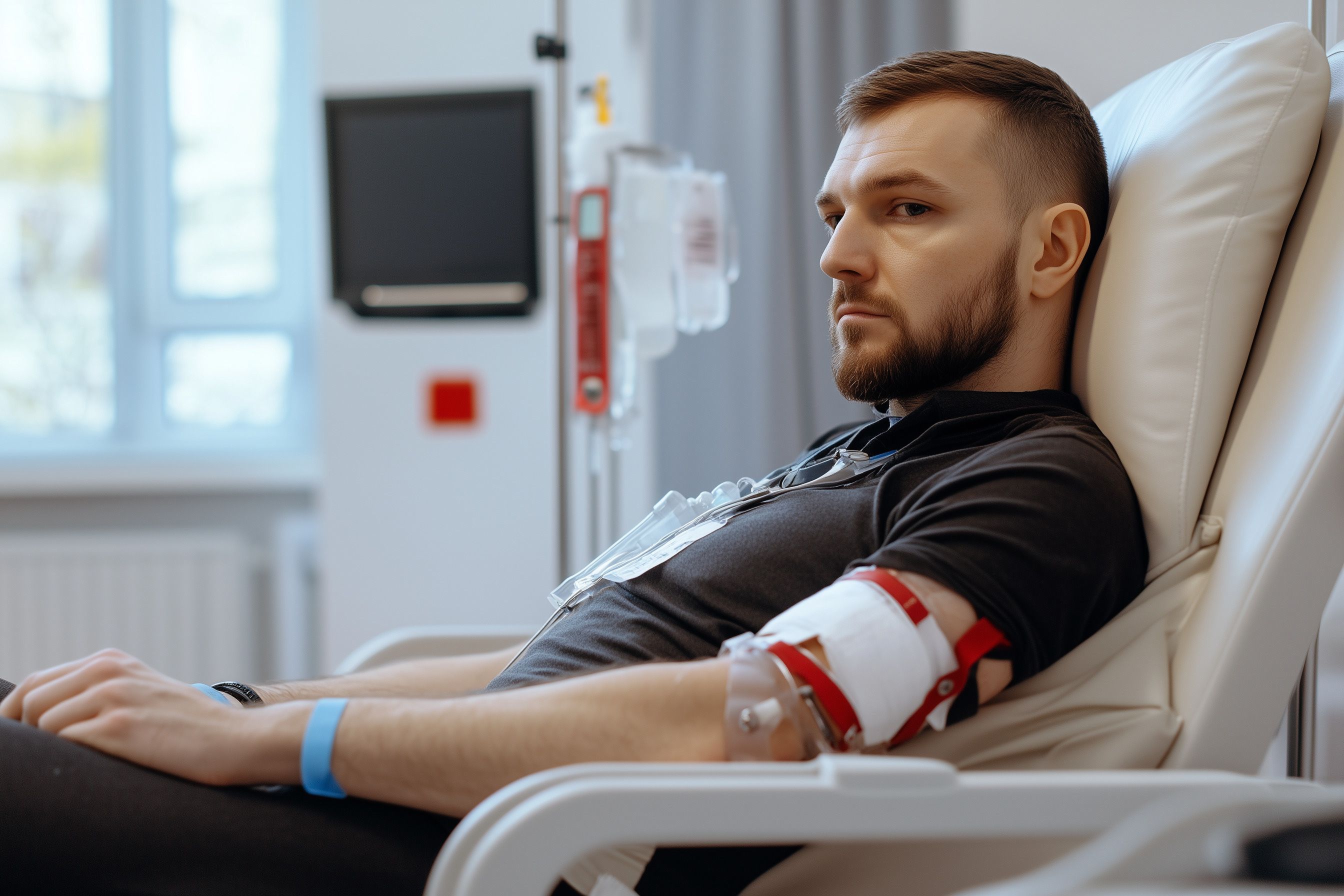Article
Overview of the Biosimilar Landscape
Author(s):
Biosimilars, which at the most simplistic level can be thought of as a type of generic option for a biologic, offer an opportunity to help reduce total biologic drug spend.
The United States is the world’s most expensive market for biologic drugs, with sales estimated at $125 billion in 2018.1 Additionally, despite less than 2% of the US population using these products, they account for 26% of the national prescription drug spend.2
Biosimilars, which at the most simplistic level can be thought of as a type of generic option for a biologic, offer an opportunity to help reduce total biologic drug spend. It’s been estimated that biosimilars could save patients and the health care system from $54 to $250 billion over their first 10 years on the market.2
Biosimilars’ Background
Unlike true generic drugs, biosimilars are generally large and complex molecules produced from living organisms. To be approved by the FDA, the agency requires analytical studies, animal studies, and a clinical study in 1 or more of the indications for which the reference product is licensed.3
The approval of the Biologics Price Competition and Innovation Act (BPCI Act) in 2009 laid the groundwork for biosimilar approval in the United States. The purpose of the pathway was to provide more treatment options, increase medication access, and lower health care costs. Despite this, the United States has lagged behind other parts of the world in terms of biosimilar pathway and approval. For example, the European Union has more than 50 biosimilars on the market, which has helped increased competition and driven prices down.
FDA-Approved Biosimilars
As of December 2019, there have been 27 biosimilars approved by the FDA, with only 12 currently on the market.
Biosimilar Name
Originator
Approval Date
Manufacturer
On Market
Possible Launch Date
Zarxio (filgrastim-sndz)
Neupogen
3/6/2015
Sandoz
X
Inflectra (infliximab-dyyb)
Remicade
4/5/2016
Pfizer/Celltrion
X
Erelzi (etanercept-szzs)
Enbrel
8/30/2016
Sandoz
Q2 2020 or 2029 (pending court decision)
Amjevita (adalimumab-atto)
Humira
9/23/2016
Amgen
Q1 2023
Renflexis (infliximab-abda)
Remicade
4/21/2017
Merck
X
Cyltezo (adalimumab-adbm)
Humira
8/25/2017
BI
Q3 2023
Mvasi (bevacizumab-awwb)
Avastin
9/14/2017
Amgen
X
Ogivri (trastuzumab-dkst)
Herceptin
12/1/2017
Mylan
X
Ixifi (infliximab-qbtx)
Remicade
12/13/2017
Pfizer
No plans to launch in US
Retacrit (epoetin alfa-epbx)
Procrit
5/15/2018
Pfizer
X
Fulphila (pegfilgrastim-jmdb)
Neulasta
6/4/2018
Mylan
X
Nivestym (filgrastim-aafi)
Neupogen
7/20/2018
Pfizer
X
Hyrimoz (adalimumab-adaz)
Humira
10/31/2018
Sandoz
Q3 2023
Udenyca (pegfilgrastim-cbqv)
Neulasta
11/2/2018
Coherus
X
Truxima (rituximab)
Rituxan
11/28/2018
Teva/Celltrion
X
Herzuma (trastuzumab-pkrb)
Herceptin
12/14/2018
Teva/Celltrion
Q1 2020
Ontruzant (trastuzumab-dttb)
Herceptin
1/18/2019
Merck/Samsung Bioepsis
Q1 2020
Trazimera (trastuzumab-qyyp)
Herceptin
3/11/2019
Pfizer
February 2020
Eticovo (etanercept-ykro)
Enbrel
4/26/2019
Samsung Bioepsis
Q2 2020 or 2029 (pending court decision)
Kanjinti (trastuzumab-ann)
Herceptin
6/13/2019
Amgen/Allergan
X
Zirabev (bevacizumab-bvzr)
Avastin
6/28/2019
Pfizer
Early 2020
Hadlima (adalimumab-bwwd)
Humira
7/23/2019
Samsung Bioepis
Q2 2023
Ruxience (rituximab-pvvr)
Rituxan
7/23/2019
Pfizer
January 2020
Ziextenzo (pegfilgrastim-bmez)
Neulasta
11/4/2019
Sandoz
X
Abrilada (adalimumab-afzb)
Humira
11/15/2019
Pfizer
Q3 2023
Avsola (infliximab-axxq)
Remicade
12/6/2019
Amgen
Early 2020
Enhertu (fam-trastuzumab deruxtecan-nxki)
Herceptin
12/20/2019
AstraZeneca/Daiichi Sankyo
However, the biosimilar pipeline is robust, and continues to grow. According to a recent estimate, there are more than 1000 biosimilars in any stage of the pipeline, representing an annual growth of 21% from 2016.4
Challenges to Widespread Adoption
Reasons for the United States’ slow adoption of biosimilars are multifactorial, but generally fall into several buckets.
Limited availability
Many biosimilars that have been approved by the FDA have not launched to the market. The primary reason for this revolves around patent litigations. Although the 2009 BPCI Act grants biologic drug manufacturers a 12-year market exclusivity period, which is longer than anywhere else in the world, patent abuses further delay competition.1
Biosimilar prices
Unlike generic drugs, which average less than 80% of the cost of the reference product, the difference between biosimilar and originator product are much less, often approaching a 10% to 15% difference. This can be attributed to the high financial cost of entry for biosimilars. For example, development costs for generic drugs typically range from $5 to $10 million, whereas the average estimated development cost of biosimilars is between $100 and $300 million per product.1 Furthermore, it’s not uncommon when biosimilars enter the market for the originator manufacturer to offer payers and providers rebates to further offset any price difference.
Physician confidence
According to several surveys, physicians cite confidence as a major barrier to biosimilar adoption. In 1 survey, only 45% of physicians believed that biosimilars would be safe and appropriate for use in both treatment-naïve and existing patients, whereas more than one-third believed that a biosimilar would be less safe than the reference biologic.5 In another survey, approximately half of physicians expressed a “complete understanding” of biosimilars, and 74% indicated that physician confidence is the main barrier to widespread adoption.6
Other barriers for biosimilar adoption include a lack of public awareness, payer formulary preferences or reimbursement, issues around product interchangeability, and extrapolating indications.
Conclusion
Although the biosimilar market has been much slower than many had expected when the BPCI Act went into law a decade ago, there is reason to be hopeful for the future. As more products get introduced to the market and physicians become more comfortable with these products, it is not unreasonable to expect to see much larger uptake in the coming years.
REFERENCES
- Brill A. The Economics Of Biologic Drugs: A Further Response To Bach et al. Health Affairs. https://www.healthaffairs.org/do/10.1377/hblog20190807.554429/full Published August 8, 2019.
- Breaking Through on Biosimilars. The Biosimilars Counsel. https://biosimilarscouncil.org/wp-content/uploads/2019/04/Breaking-Through-on-Biosimilars-Biosimilars-Council-White-Paper.pdf Published May 30, 2018.
- Biosimilars. U.S. Food & Drug Administration. https://www.fda.gov/drugs/therapeutic-biologics-applications-bla/biosimilars Published September 23, 2019.
- Rader RA. Biosimilars Pipeline Shows Remarkable, Sustained Growth. Biosimilar Development. https://www.biosimilardevelopment.com/doc/biosimilars-pipeline-shows-remarkable-sustained-growth-0001 Published March 7, 2019.
- Brill A, Robinson C. Steps to Reducing Barriers to Biosimilars in the United States. Matrix Global Advisors. https://www.boehringer-ingelheim.us/sites/us/files/files/barrierstobiosimilars_september2018.pdf Published September 2018.
- In a Survey, Physicians Rank Their Own Confidence as Primary Barrier to Biosimilar Adoption. Center for Biosimilars. https://www.centerforbiosimilars.com/news/in-survey-physicians-rank-their-own-confidence-as-the-primary-barrier-to-biosimilar-adoption Published October 25, 2019. Accessed January 21, 2020.






